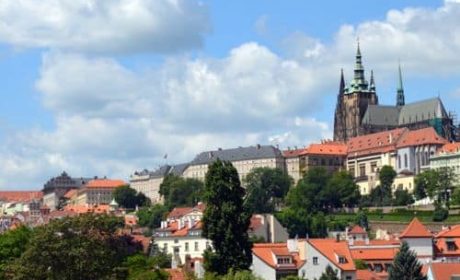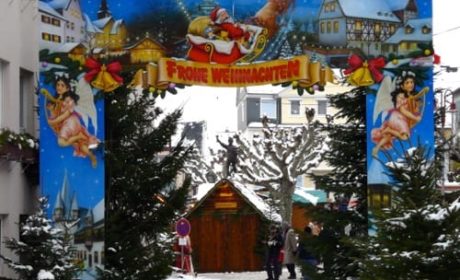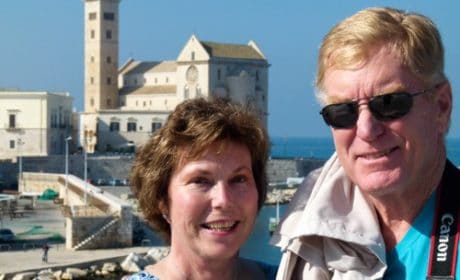A visit to the Greek Islands is on our baby boomer travel list. Alan and I would like to hike on Sifnos and explore historic Rhodes. After reading today’s guest post from Heather Cowper of Heather On Her Travels, We’ll be sure to include a few days to experience Zakynthos.
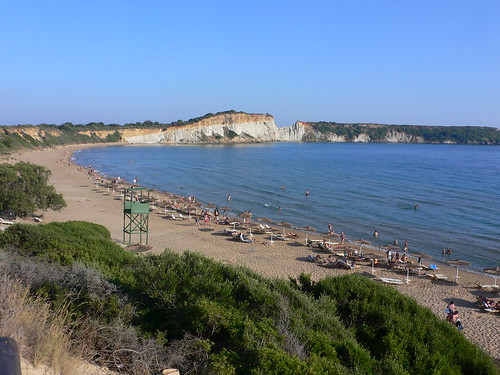
The Greek island of Zakynthos, also known as Zante, is one of the Ionian islands that’s popular with holidaymakers who come to enjoy the sandy beaches and sunshine. Over the years, we’ve been able to explore the island and discover that there are plenty of interesting things to tempt you from your sun-bed. Here are some of my favorites:
Zante town
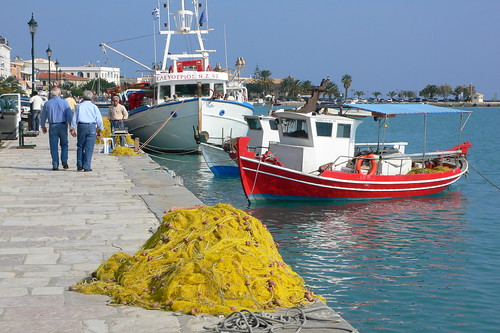
Much of Zante town, the capital of the island, was destroyed in the terrible earthquake of 1953 that flattened most of the town. Although there aren’t many picturesque old buildings to admire, we always enjoy a walk along the quayside, where the painted fishing boats sometimes sell their catch with their yellow nets drying on the pavement. On a walk along the harbor wall past the larger ships and smaller sailing boats to where the local fishermen set up their lines, you’ll feel the wind blowing you towards the neighboring island of Kefalonia.
Romas Mansion
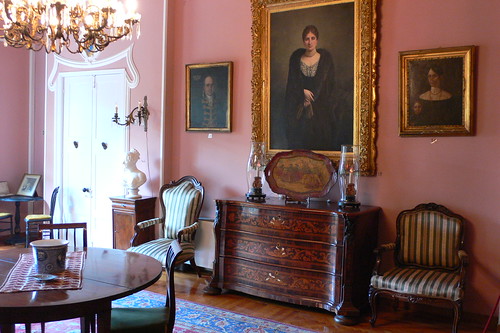
Tucked away in the back streets close to St Mark’s square is Romas Mansion, one of the few old houses in Zante town that survived the earthquake. This mansion, owned by the Romas family, contains family portraits, antique furniture and furnishings that indicate the affluent lifestyle of the aristocracy of the island.
The Mansion was built in the 1660s by the English Vice consul on Zakynthos and during the period of the English Protection (1814-1864) was used as the seat of government on Zakynthos. Later the house was bought by Alexander Romas, Government minister and President of the Greek Parliament. The mansion has remained in his family to this day.
If you look closely, you’ll see that the house and nearby chapel are built a meter below the current street level, as after the earthquake, the town was rebuilt on top of the rubble of the buildings destroyed. The house looks directly onto the sea. Before the coast road was built to give access following the earthquake, the house had private access to the sea.
The Venetian Fort Above Zante town

As you stand in Zante town, look up to the cliffs that overlook the town. You’ll spy a church tower, café terrace and a wooded area that is the site of the old Venetian Fort or Kastro. The Fort is open most mornings. To enter, pass through the old stone gateway with a carved Venetian lion.
Dating back to the 15th century, the Fort is enclosed by a stone wall with steep drops on all sides, offering a panoramic view over the island. In 1460 the fort was destroyed by the Turks. Later the islanders tried to repair it with the help of the Venetians at one point making it the capital of the island.
Inside the walls, there was once a large encampment but the area is now overgrown with pine trees that give welcome shade on a hot day. You can see the remains of a few stone buildings such as the prison cells and the munitions building with old canons lying around. Keep watch from the rampart walls and imagine yourself to be on lookout for an invasion from the sea.
If the fortress is closed, you can still enjoy the view by taking a frappe on the terrace at one of the cafes in this area, known as Bohali. Do take a look inside the beautiful church if it’s open, which is a favorite spot for weddings and christenings.
St Denis Monastery near Volimes
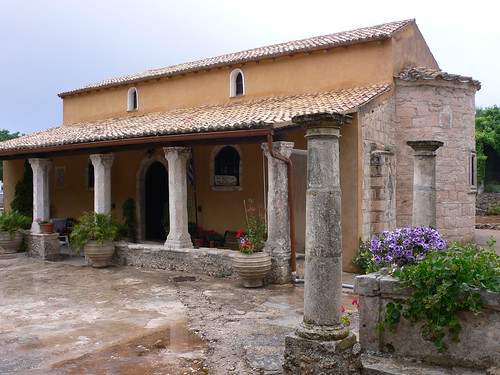
On the rocky northern end of the island, the village of Volimes is known for its handmade lace and honey, which you’ll find on display in the small shops there. Close by you’ll also find the well-known St Denis Monastery or Monastery of Theotokos Anafonitria.
St Denis was born on the island in the 16th century to a wealthy family. He became the Archbishop of Zakynthos and, after his death, was named the patron saint of the island. It’s typical for the Greeks to name their children with saints’ names, which is why it seems that half the boys on the island are named after St Denis.
You enter the walled compound through a stone archway, progressing into a pretty courtyard with a defensive bell tower and then the small church. The monastery is quite bare inside apart from some lovely painted frescoes on the altar screen and a painting of St Denis. The impressive icon of the Madonna and child is decked with row upon row of gold rings and earrings that must have been donated by faithful pilgrims.
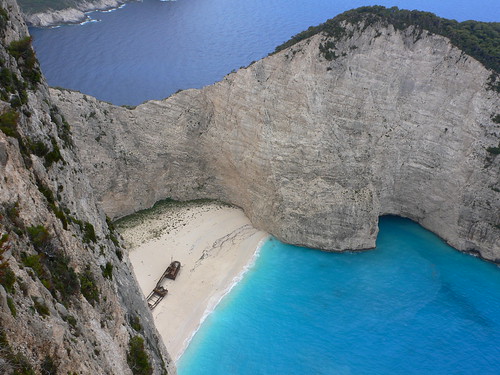
While you’re in the area, make a photo stop on the cliffs overlooking the picturesque bay of Navagio, or Smuggler’s Bay, that is featured on all the guidebooks and postcards.
If you’re still looking for beautiful beaches on Zakynthos, I recommend those in the Vassilikos area of the island, especially the unspoilt Gerakas beach where the turtles return to lay their eggs each year. Be sure to check out the turtle information center run by the Earth Sea and Sky conservation organization.
Do you have a favorite Greek Island? Come join the conversation at the My Itchy Travel Feet page on Facebook. Or send us an email with your thoughts.
All photos courtesy of Heather Cowper.

